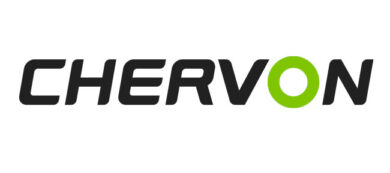Increasing Shop Profitability Series (Part I): Turning your service department from cost center to profit center
First article in a series
By Jim Yount
I have learned that in certain circumstances it may not be possible, or cost effective, to invest time trying to persuade everybody who operates a service department they can earn a profit. Instead, this series of articles is designed for the dealer/retailer or manager of the service department who is not satisfied with the department’s performance because year after year the bottom line is at best break even and losses are deemed acceptable.
While traveling throughout the United States and Canada and other places in the world, I’ve been told many, many times, “A service department is necessary to my business, but you can’t turn a profit.”
My answer is always the same: “I meet dealers everywhere we travel who operate a successful service department.” What I mean by successful is the service department is expected to produce its share of gross-profit dollars and is managed as a profit center. It is not uncommon for a service department staffed with two to three technicians to earn as much as 25 to 30 percent of the total gross-profit dollars earned by the company. This does not include profit earned on the sales of parts and accessories required to complete the work order. We’re speaking about labor income only.
Here’s an example of what I’m talking about. From our files, one such customer produced an annual gross profit margin of $640,000. Of that amount, the service department earned $186,000. That’s 29.06 percent of the company’s total gross profit dollars earned.
Mark Twain, a noted author, once said: “It’s not what we don’t know that hurts us. It’s what we believe to be true.”
Too many dealers/retailers believe it’s impossible to earn a profit in the service department. And that’s just not a true statement. The truth is if one dealer can take the time to learn how to earn a profit in the service department, you can too.
In the past three to four decades, Americans have drastically changed the way they live their lives. During the 1940s, ‘50s and ‘60s, a majority of the population would not have hired someone to maintain their lawn and take care of their shrubs and trees. Many folks changed oil, spark plugs and air filters and even rebuilt engines in their automobiles. Remodeling the home was a favorite pastime. By the ‘70s, moms were taking full-time jobs. The pace of life increased five-fold. Today, the family eats more meals away from the home than at home. Quick-change oil and lubrication shops and take-out restaurants are big business. There has been an explosive growth in handyman home repairs, plumbing and electrical shops, and outsourcing lawn maintenance.
With mom on the job and the additional income, it seems our desire has increased for owning one of everything that has an engine, including recreational vehicles such as ATVs, jet skis, motorized bikes of all sizes, go-karts, high-end zero-turn mowers, string trimmers and chain saws. Don’t forget the many tools used in the construction business that are driven by small gasoline and diesel engines. The list goes on.
What am I saying? If you are prepared to invest the time and effort toward learning new ways of managing your service department, this series of articles will guide you step by step through the process of learning how to tap into your service department’s potential — potential being governed by your store’s ability to pull customers into your store.
My objective in the first article in this series is to sell you on the fact there is opportunity. The opportunity exists to build a highly productive, profit-producing and thriving service department.
The first step in rebuilding the service department is to change what’s known as a behavioral attitude toward the department. The service department occupies a unique position. It may occupy 20-30 percent of your facility’s total floor space. The owner may have spent thousands of dollars equipping the department. Typically, a service department is the only area of business where owners hire technicians and then resell payroll hours to customers in the form of hourly shop labor rate. With this fact in mind, technician efficiency is easily measured using a mathematical formula. There is another thought related to uniqueness in a service department. A well-equipped, professionally staffed and meticulously maintained service department is your store’s competitive edge in the marketplace, especially against the big box stores.
Don’t make the mistake others have made. We are not discussing theory; we’re sharing facts rooted in mathematical evidence.
We’ll begin with purchasing time from experienced and qualified technicians. Service department efficiency is a simple measurement. For example, during an 8-hour workday, if a technician bills 4 hours of the day to customers, his/her performance efficiency rating is 50 percent. In many dealerships, a 50-percent efficiency ratio is not sufficient to break even when you consider the service department’s fair share of applied operating expenses. Hard operating expenses include rent/lease, property taxes, telephone, electricity, specialty tools and equipment, etc. We will discuss this in detail a little later. Of course, earnings are directly related to the shop’s hourly labor rate charged to customers.
Assuming an hourly labor rate of $65, multiplied by 4 hours billed, the technician earned $260 in department revenue. Since there is no cost of goods related to earning $260, it’s considered 100-percent profit. You can use all $260 to pay bills. The cost of your technician’s wages is considered and tracked in the payroll section of operating expenses as referenced in the income statement. When considering the department’s share of hard cost, $260 may not be sufficient to pay his/her portion of operating expenses. More details will be discussed later.
The good news is during the past 15 years, we’ve seen the average efficiency grow from about 40 percent to just above 50 percent. The industry is making progress.
In the next article in this series, we will take a look at the Service Department Efficiency Analysis Ratio (SDEAR) chart. This chart was developed for the purpose of measuring and reporting service department efficiency because the more efficient the department becomes, the more profit it produces.
Jim Yount is the founder and chief executive officer of Jim Yount Success Dynamics LLC. For more than 30 years, he has hired, trained, managed, sold, marketed, and motivated. Extensive real-world experience in retailing, distribution and working with manufacturers, both domestic and international, has earned Jim the reputation as a trustworthy and knowledgeable professional in his field. As a results-oriented speaker, he is dedicated to inspiring groups of 30 to 3,000 to develop their talents and realize their full potential. As a business consultant, teacher and coach, Jim is experienced at challenging leaders to explore their operational procedures and change unacceptable practices that are producing poor results. For more information, contact Jim at jimyount@hughes.net or (903) 796-3094 or visit his website at www.jimyountsuccessdynamics.com.



